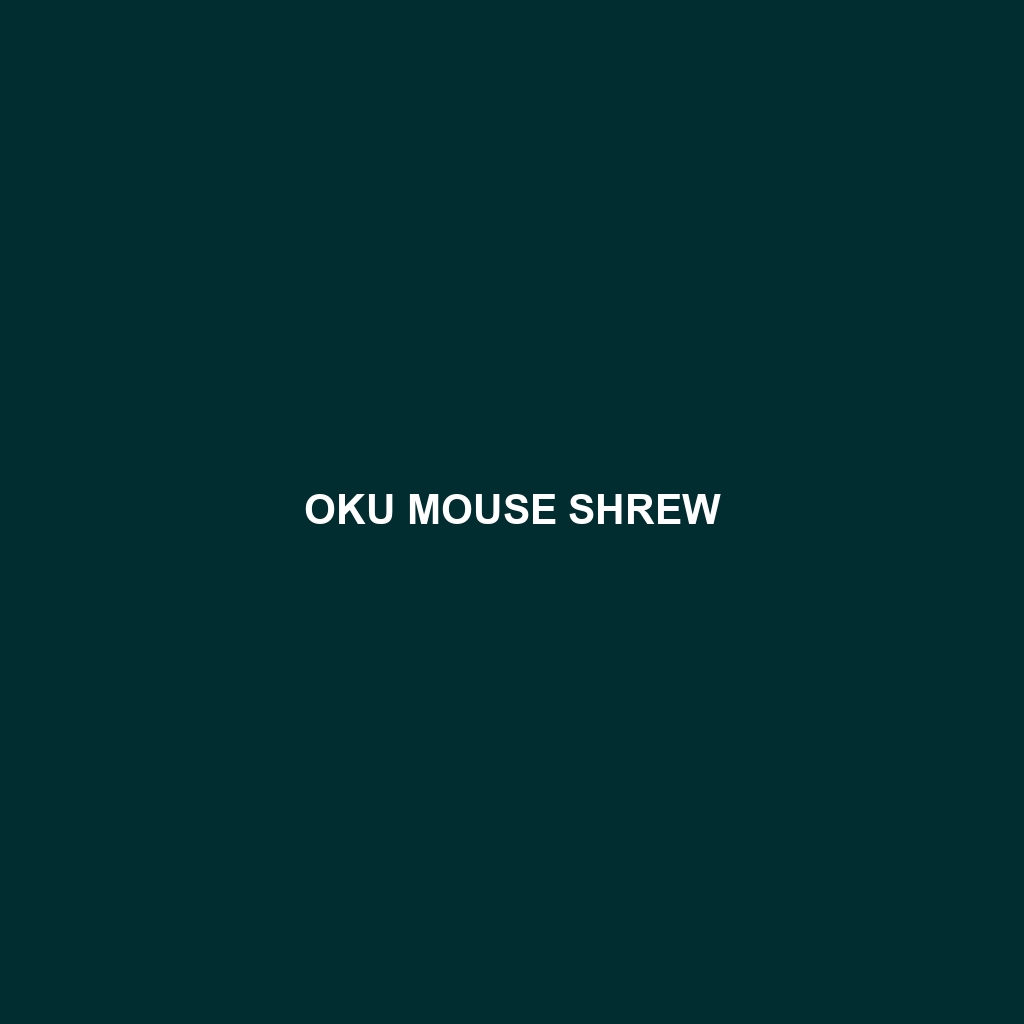Oku Mouse Shrew
Common Name: Oku Mouse Shrew
Scientific Name: Myosorex okuensis
Habitat: The Oku Mouse Shrew is primarily found in the mountainous regions of Cameroon, particularly within the Oku region. This species inhabits submontane and montane forests, thriving in moist environments rich in vegetation. It typically resides in areas with dense underbrush, which provide cover and hunting grounds. The Oku Mouse Shrew is often associated with the unique forest ecosystems in the Bamenda Highlands, where a combination of altitude and climate creates a suitable habitat.
Physical Characteristics: The Oku Mouse Shrew is a small mammal, measuring approximately 8 to 12 centimeters in body length, not including its long tail, which can add another 6 to 10 centimeters. It has a pointed snout, small rounded ears, and large eyes, which are adaptations for its nocturnal lifestyle. The fur is soft and dense, typically exhibiting a reddish-brown or grayish coloration on the dorsal side, while the underside appears lighter. Its size and agility make it an adept forager within its forest habitat, and its distinctive features allow for easy identification.
Behavior: Oku Mouse Shrews are primarily nocturnal, exhibiting high levels of activity during the night. They are solitary animals, often foraging alone. These shrews communicate through a range of vocalizations, including squeaks and chirps, particularly during mating season. Their foraging behavior includes digging and probing under leaves and soil to uncover insects and other invertebrates. This species is also known to display erratic movements to evade potential predators, making them challenging to observe in the wild.
Diet: The diet of the Oku Mouse Shrew consists mainly of insects, including beetles, ants, and larvae, along with other small invertebrates. They play a significant role in controlling insect populations within their habitat. Foraging is typically done through active hunting or by foraging through leaf litter. Their acute sense of smell and hearing aids in locating food sources, making them effective predators in the underbrush.
Reproduction: Oku Mouse Shrews breed seasonally, with the breeding period observed mainly from late spring through early summer. Females can give birth to 2-5 offspring after a gestation period of around 30 days. Offspring are born hairless and blind, relying on the mother for nourishment and protection. As they mature, young shrews begin to forage independently while still depending on maternal care.
Conservation Status: The current conservation status of the Oku Mouse Shrew is classified as Vulnerable due to habitat loss stemming from deforestation and agricultural expansion. Conservation efforts are vital to preserve this unique species and its forest habitat, ensuring it does not move closer to being endangered.
Interesting Facts: The Oku Mouse Shrew is part of a unique ecosystem exclusive to the Cameroon highlands and represents an important area for biodiversity. Furthermore, these shrews have a relatively high metabolism, enabling them to move quickly and efficiently in search of food, which is essential for their survival in a competitive environment.
Role in Ecosystem: The Oku Mouse Shrew plays a crucial role in its ecosystem as both a predator and prey. By controlling insect populations, they contribute to the ecological balance within the forest. Additionally, as a food source for larger predators, such as birds of prey and small mammals, they are an integral part of the food web. Their presence indicates a healthy environment, highlighting the importance of biodiversity in maintaining ecological integrity in their native habitat.
